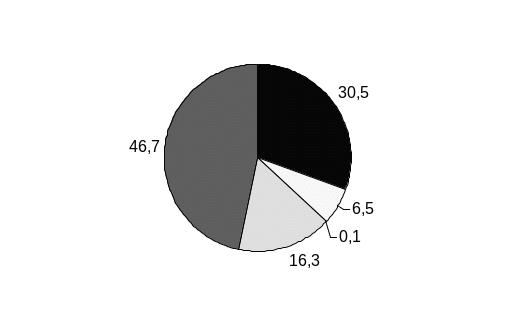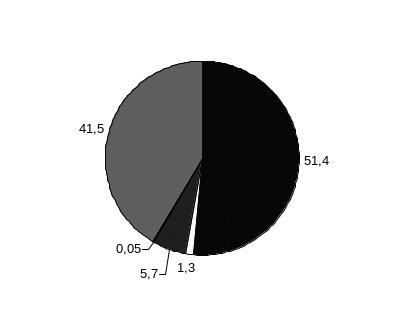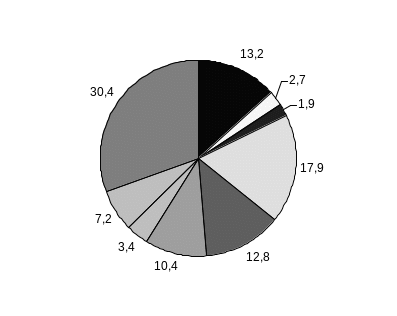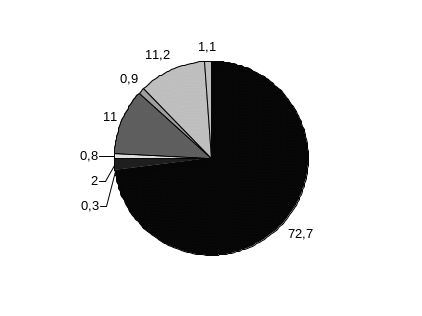
- •Английский язык "Российский Дальний Восток"
- •Российский дальний восток
- •Предисловие
- •I. The geography of the russian far east
- •The geography of the Russian Far East
- •Flora and fauna of the Russian Far East
- •Mineral resources. Population
- •Vocabulary:
- •Act out the dialogue or continue the boys’ talk about the Russian Far East. Ex. 14. Do you know that:
- •Ask questions to the points above.
- •Vocabulary:
- •II. The khabarovsky krai
- •The Khabarovsky Krai
- •Vocabulary:
- •III. The economy of the russian far east General Economic Profile of the Russian Far East
- •Vocabulary:
- •Extra information on the economy of the russian far east Resource Potential
- •Agriculture
- •Industry
- •Construction
- •Transport
- •Foreign Relationships of the Russian Far East
- •Vocabulary:
- •The economy of the khabarovsky krai
- •Ex. 6. Complete the sentences, using modal verbs or their equivalents in correct tense-forms:
- •Vocabulary:
- •The Russian Far East economy through the figures
- •Magadanskaya Oblast Sahalinskaya Oblast
- •Koryaksky Autonomous Chukotsky Autonomous Okrug Okrug
- •Jewish Autonomous Oblast Republic of Sakha (Yakutiya)
- •IV. Study the additional information about the russian far east When did the pioneers first appear in the Far East?
- •What geographical discoveries were made as the pioneers went on their travels?
- •Who was Bering after whom a sea, a strait and an island were named?
- •From the history of the Far East
- •The history of the origin of the Far Eastern Minority Tribes
- •Mighty Amur
- •Two banks of one river: Russia and China. Problems of ecology
- •Amur tiger
- •Far Eastern leopard
- •Kunst and Alberts
- •V. Check your knowledge test "the khabarovsky krai"
- •Crossword I
- •Crossword II Down:
- •Contents
Koryaksky Autonomous Chukotsky Autonomous Okrug Okrug
The Koryaksky Autonomous Okrug is situated in the northern part of Kamchtka. It was founded in October 10,1930 as the part of the Kamchatskaya Oblast. Nowadays it is the RF’s subject, included in the Kamchatsky Krai. Population is about 30000 people. |
The Chukotsky Autonomous Okrug was founded in October 10,1930 as the part of the Magadanskaya Oblast. It became the RF’s subject in 1992. Population is about 75000 people. |


- 51.4 % - food industry metallurgy - 46.7 % - non-ferrous
- 41.5 % - non-ferrous metallurgy - 30.5 % - electric energy
- 5.7 % - electric energy - 16.3 % - food industry
- 1.3 % - fuel complex - 6.5 % - fuel complex
- 0.05 % - other industries - 0.1 % - other industries
Jewish Autonomous Oblast Republic of Sakha (Yakutiya)
The Jewish Autonomous Oblast is located in the south – west of the Far East. It was founded in 1934,but it was separated from the Khabarovsky Krai and became independent in 1992. Birobidzhan is the center of it. Population is about 200000 people.
|
The Republic of Sakha (Yakutiya) is situated in the north of Russia. It was founded in April 25,1992. Yakutsk is the center of it. Population is about 1 mil.people.
|


- 30.4 % - construction metallurgy - 72.7 % - non-ferrous
- 17.9 % - electric energy - 11.2 % - fuel complex
- 13.2 % - machine building - 11 % - electric energy
- 12.8 % - forest complex - 2 % - food industry
- 10.4 % - light industry - 1.1 % - other industries
- 7.2 % - food industry - 0.9 % - construction
- 3.4 % - other industries - 0.8 % - construction
- 2.7 % - non-ferrous metallurgy - 0.3 % - machine building
- 1.9 % - fuel complex
IV. Study the additional information about the russian far east When did the pioneers first appear in the Far East?
They appeared in Yakutia in the 1620s. History has preserved the name of Nikifor Penda. Having gathered a detachment of 40 people, Penda began his march about 1620 from Turukhansk. At this point the right tributary, the Lower Tunguska, falls into the River Yenisei. The detachment came to the upper reaches of this river on rafts under sail from where it reached the River Lena by land. There they again made rafts and sailed northward along the Lena. In the place now occupied by the city of Yakutsk Penda and his fellow explorers saw the Yakut for the first time. The detachment returned in a slightly different way – first to the upper reaches of the Lena, then walked to the Angara, another right tributary of the Yenisei, and reached Turukhansk by water. Several other pioneers came to Yakutia after Penda.In 1632, Pyotr Beketov, the commander of a streltsy detachment, 100-strong, built the Lena ostrog*, the present-day Yakutsk, which bacame a base for the further advancement of the Russians eastward. Seven years later, in 1639, they reached the “end of the world” – a Cossack detachment, headed by Ivan Moskvitin, reached the shore of the Pacific near the present-day port of Okhotsk. By the late 17th century, the Russians had information, although incomplete, about the whole of the Far East, including Kamchatka and the Kurile Islands.
* The ostrog is the Russian name for a fortification which was usually erected on a steep river bank. Housing constructions would be surrounded by wooden walls with turrets where cannons would be placed. Sometimes the ostrog was enclosed by a dirt bank and encircled within a deep moat.
Answer the questions:
When did Nikifor Penda and his people begin their march?
What kind of transportation did they use?
Where did Penda’s detachment meet the Yakuts for the first time?
What was Pyotr Beketov?
When and how was Yakutsk founded? What significance did it have?
When did the Cossack detachment headed by Ivan Moskvitin reach the Pacific?
When did the Russians have the information about the whole of the Far East?
Make up sentences about the first explorers of the Russian Far East, using the key-words in the columns:
1620s 1632 1639 the late 17th century |
Ivan Moskvitin The Russians Nikifor Penda Pyotr Beketov |
Lena Ostrog Okhotsk the whole of the Far East the Yakut |
